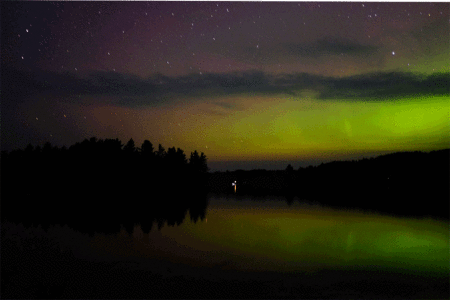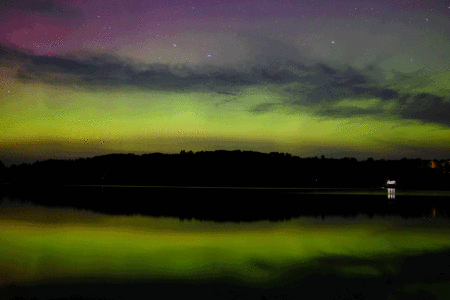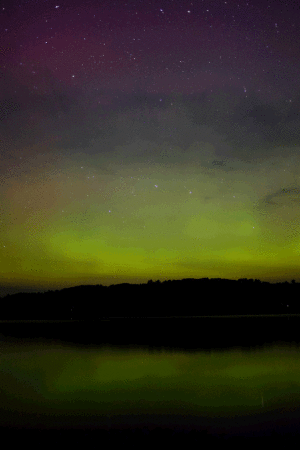Thanks to the intervention of my friend Amanda, I spent the weekend at my friend Sabrina’s cottage on Paugh Lake, near Barry’s Bay, Ontario.
I had high hopes for a clear view of the fading Perseid meteor shower on Friday and Saturday night. Friday night was overcast and raining, though it was still remarkable to be in a place where rain falling on roofs and water, along with animal noises, were the only things audible. I am not sure when I was last outside a major urban area, but there haven’t been many cases since I moved to Toronto.
Saturday gifted us with perfect astronomical viewing conditions: far from city lights, and untroubled by the moon. We didn’t see a lot of meteors, but the sky was so full of stars that it made identifying familiar constellations a challenge. Across the sky, the band of the Milky Way was clearly visible, wheeling above us as the night went on.
Experimenting with some long exposures with my Fuji X100S (and a stepladder and dishcloth as an improvised tripod) I was surprised to see that the vague light in the northern sky came out as brilliant colour when photographed at 1600 ISO with a 30″ exposure.
I ended up spending hours photographing the aurora. There will be high quality images soon (and animated GIF is a terribly low-quality format for something so beautiful), but I wanted to put something up right away that would show the movement of the lights.
You may need to click the thumbnail to see the animation:



Aside from reducing the resolution and converting them to GIF format, these images are straight from the camera, not manipulated with any sort of software.



